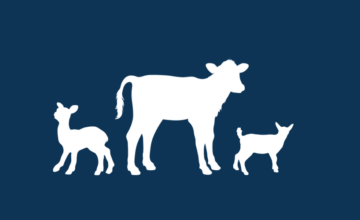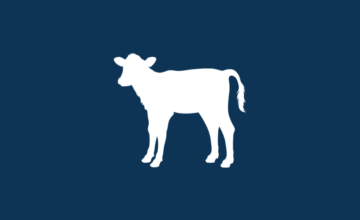Pasteurization Pro’s and Con’s
- Mar 31, 2009
- By Grober Nutrition
- In Canada
Heifers are the future profit earners of a milking herd. The largest cost inputs are feed and the number of day’s growth to achieve first calving. Raising healthy, strong calves must be a priority in maintaining herd profitability.
In the last few years, larger calf raising units and more attention being paid to rearing costs and profits, has made it interesting to look into the possibility of on farm pasteurization for waste milk.
Important criteria to consider in choosing a milk feeding program:
- Number of calves being fed
- Nutritional requirements
- Performance targets
- Consistency of availability
- Storage & preservation requirements
- Infectious disease control Economics
The number of calves fed: It is important to have a stable supply of milk so that young calves’ diet is consistent. Often, the quantity of waste milk available is sufficient for units operations.
Nutritional requirements of the young calf and performance targets
Whole milk and milk replacers can be compared on an energy and protein basis to provide some indication of growth performance. Whole milk can have a variable nutrient profile and is low in vitamins and some minerals. Pasteurized milk is subjected to high temperatures, therefore care and attention must be taken to avoid denaturing of proteins and vitamin loss etc.
Milk sources
Transition milk: availability, variability, storage and preservation can be a problem, particularly for large numbers of calves. Warm or hot weather can result in putrefactive fermentation. Non saleable or discard milk: Milk from cows after antibiotic treatment for mastitis or other infectious diseases which cannot be sold. There are concerns of development of antibiotic resistance for intestinal bacteria in calves and antibiotic residues may also result in unsaleable calves after the withdrawal period. Milk replacer: Quality products are consistent and formulated to high standards to ensure that the young calf is provided with the best possible nutrition and start in life.
Infectious disease control
It is easier and more cost effective to try and prevent disease situations than to cure them once they have become established. Decreasing exposure to disease is a primary method of decreasing disease. Calves are the most vulnerable animals on the farm to infection and disease. Some of these disease conditions can be transmitted to calves through feeding practices. There is a large ‘risk’ factor associated with feeding waste milk for transmission of infectious diseases to calves, (Godden 2004). Pathogens that may be transmitted in colostrum and milk include: Mycobacterium avium subsp. Paratuberculosis (Mptb) (the agent causing Johne’s disease); Salmonella spp.; Mycoplasma spp.; Listeria monocytogenes; Campylobacter spp.; Mycobacterium bovis; E.coli. (most common identified pathogen). The prevalence of Mptb in Ontario dairy cattle has been estimated to be 6.1% (McNab et al., 1991). At the herd level, 16.7% of herds had at least two Mptb-positive cows (VanLeeuwen et al., 2001). On-farm commercial pasteurizers are offering a method of reducing but not eliminating this risk of disease transmission.
Economics
Installation and daily operation costs need to be considered when evaluating on farm waste milk pasteurization. For example electricity, drainage, chemicals, labour, maintenance and repairs, depreciation, interest payments etc. Some industry data suggests operation costs from $0.067 to $0.46 per calf per day to operate a pasteurizer. (University Wisconsin, 2002) Producers would be advised to assess the equipment, space, time and handling requirements alongside economic and nutritional efficiency compared with alternatives like milk replacer. This must be combined with the risk factors of transmission of infectious diseases to calves.
Facts to consider
- It is recommended that milk is <1,000,000 CFU/ml to achieve adequate pasteurization efficacy. This requires chilling to prevent growth and fermentation of pre-pasteurized milk. (Unchilled waste milk may reach 1,000,000,000 CFU/ml in summer, (Reynolds 2002); on farm waste milk tested 14,960,000CFU/ml (S.McGuirk 2003).
- Pasteurization is a process of heating milk to a specific temperature for a specified amount of time to reduce the bacteria to negligible levels. For example Batch process: 66°C for 30mins or continuous flow (HTST): 72oC for 15 secs.
- Heating destroys or reduces the presence of viable bacteria. Some bacteria will survive the process. These are either heat-tolerant bacteria or a result of a very high concentration of bacteria in raw milk.
- The goal for post pasteurized milk is <20,000 CFU/ml. (Grade A milk for human consumption) to <10,000 CFU/ml total bacteria.
- Bacterial numbers double every 20 minutes. In ideal conditions, after one hour this could be > 500,000 CFU/ml. This is a very high load for the young calf gut to handle.
- The efficacy of pasteurization in destroying Mptb (the agent causing Johne’s disease), remains controversial between the different pasteurization systems (Batch or HTST). For E.g. UofG, 2003, result indicates that Mptb may survive HTST pasteurization. J. Dairy Science 2001; 84(2):524-527 “Results suggest that batch pasteurization of waste milk contaminated with M. paratuberculosis was effective at generating a clean product to feed to young calves.” USDA tests conducted 1997 showed that “treatment of raw milk at 72° C (162° F) for 15 seconds effectively killed all M. paratuberculosis.” (J.R. Stabel, et al). Turbulent flow is suggested to be essential for complete killing of Mptb contamination.
Problems with pasteurization
Extreme care and attention is required when handling milk. Maintenance and sanitation of the pasteurizer are ongoing and essential for maintaining high quality end product. Agitation is suggested to ensure even heating and higher kill %. This can be very expensive to install and maintain. Pasteurizing colostrum in standard pasteurizers can be difficult due to thickening (denatured proteins coagulate) and poor flow (clumps plug equipment). Immunogloblin (IgG) levels in pasteurized colostrum can be significantly reduced (e.g. 24-58% reduction!). A high colostrum Ig concentration is one of the critical factors to ensure that the calf receives adequate ‘passive transfer’. This helps protect the young calf from infectious diseases until its on immune system becomes fully functional. Proper management of colostrum (sanitation, cooling, storage, thawing etc) is better to ensure low bacterial load and high quality clean colostrum. Grober provides high quality milk replacers for successful and healthy calf rearing. Milk Replacer quality comes from several areas; the raw materials used, the method of manufacture and the soundness of the feeding nutrition program. All Grober milk replacers are manufactured with the same important high quality guidelines. Grober quality milk replacers ensure that the products are free of pathogens and contain a low bacterial load. Typical levels: <25,000CFU in milk replacer, equivalent to <5000 CFU/ml in milk solution using low bacterial load water.
Grober Nutrition
Recent Posts
Tags
Archives
- October 2024
- July 2024
- May 2024
- April 2024
- January 2024
- December 2023
- October 2023
- September 2023
- August 2023
- June 2023
- December 2022
- November 2022
- October 2022
- August 2022
- July 2022
- June 2022
- May 2022
- April 2022
- March 2022
- February 2022
- January 2022
- August 2021
- February 2021
- September 2020
- June 2020
- April 2020
- May 2017
- April 2017
- October 2016
- September 2016
- August 2016
- March 2016
- March 2015
- January 2015
- December 2014
- December 2013
- September 2013
- May 2013
- January 2013
- December 2012
- November 2012
- March 2012
- March 2011
- February 2011
- November 2010
- August 2010
- December 2009
- November 2009
- March 2009















